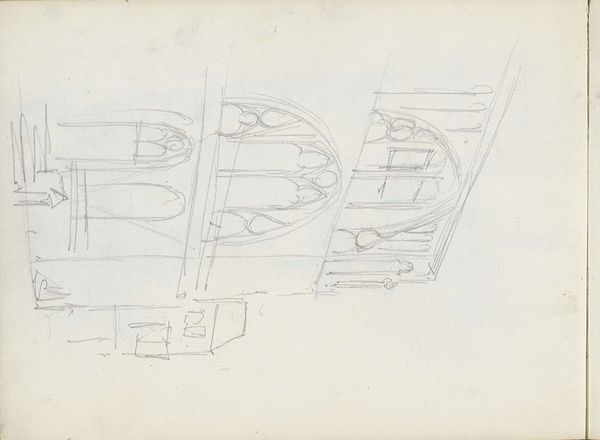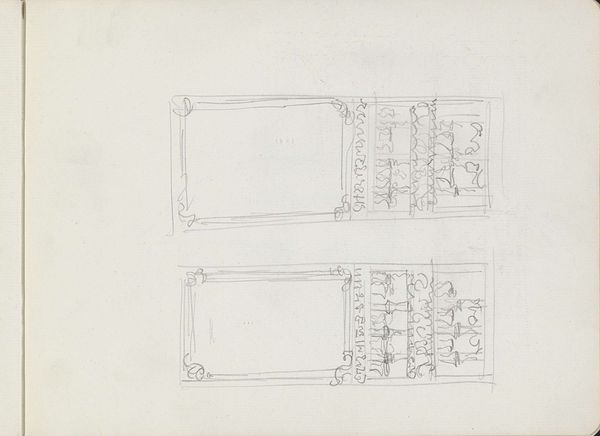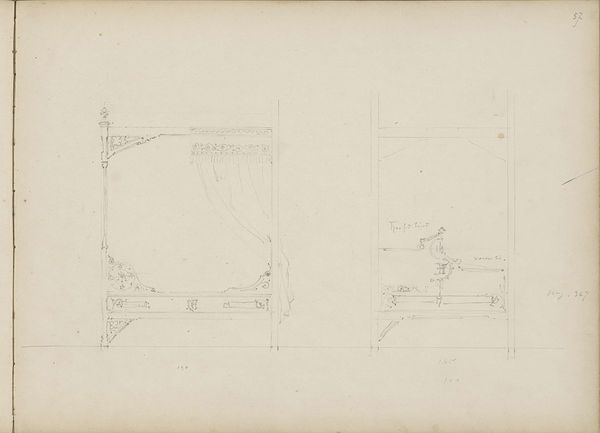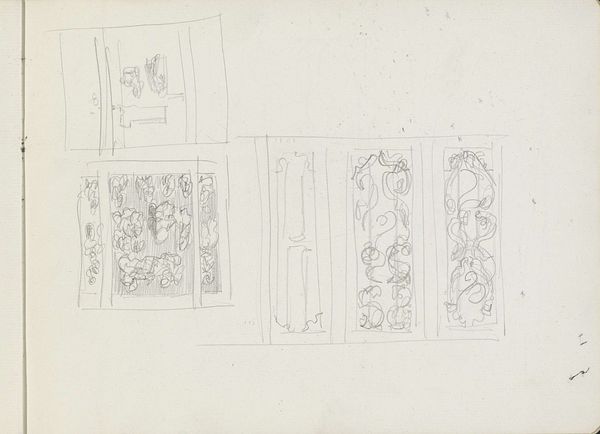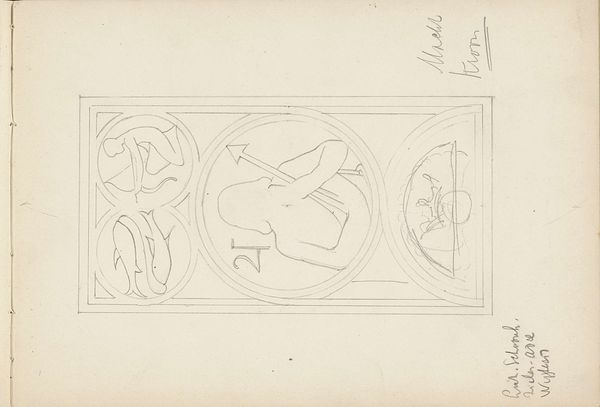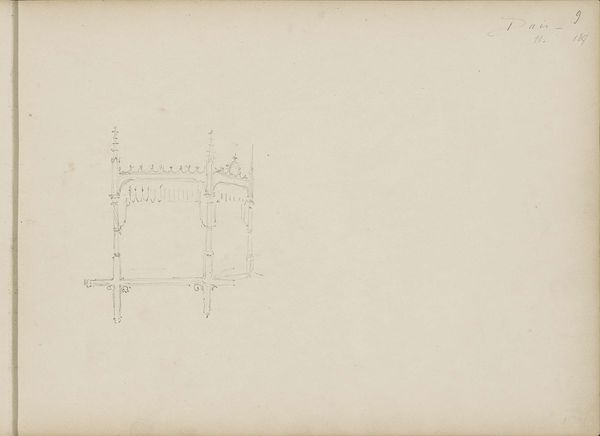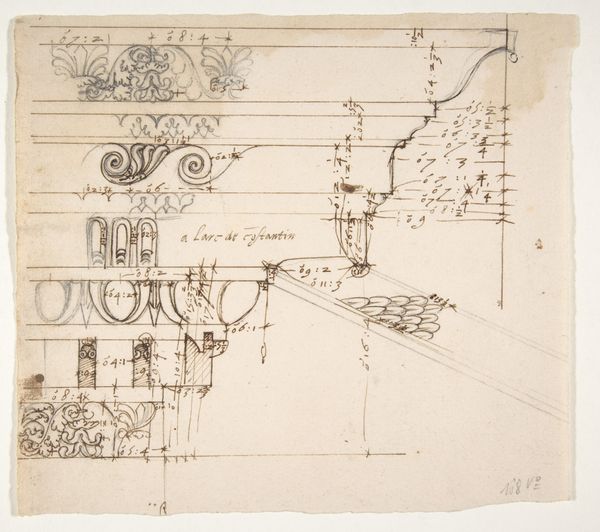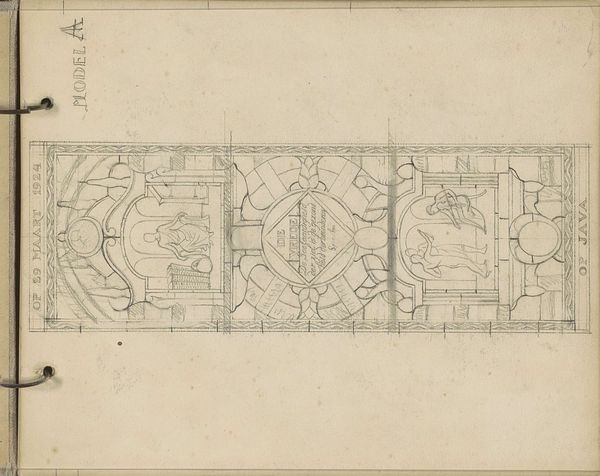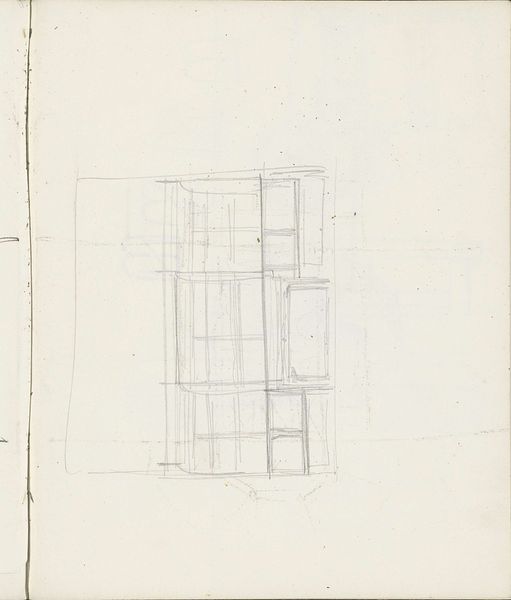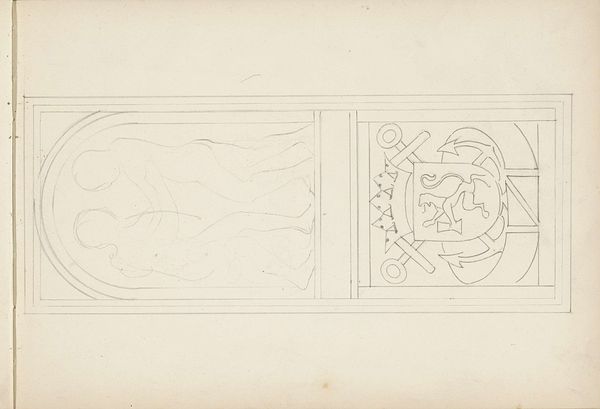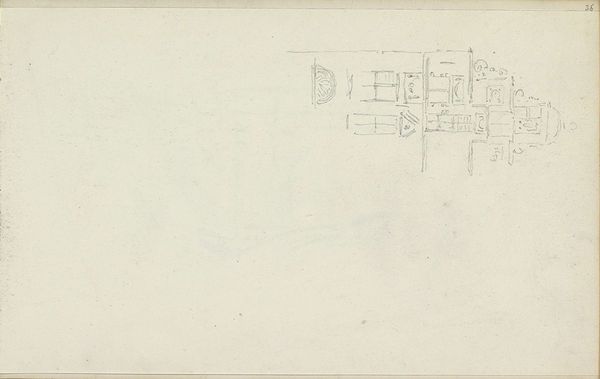
drawing, paper, pencil
#
drawing
#
art-nouveau
#
pencil sketch
#
paper
#
geometric
#
pencil
Copyright: Rijks Museum: Open Domain
Curator: My eyes are drawn to this quick pencil sketch by Carel Adolph Lion Cachet, titled "Ontwerpen voor plinten," made sometime between 1905 and 1910. What strikes you initially about it? Editor: There’s an interesting delicacy to these raw lines. Like peering into the initial whisper of an idea. But those intertwining patterns...it’s almost as if they’re wrestling to be free from their architectural confines, struggling against the very structure they are meant to embellish. Curator: Indeed. We're seeing the preliminary studies for plinths, or baseboards. It's a fascinating peek into the Art Nouveau movement's preoccupation with bringing nature indoors, isn't it? Think about the materials suggested by this style; wood, perhaps, carved intricately. We can almost feel the texture. It bridges design, craftsmanship, and mass-produced interiors. Editor: I love how a utilitarian object transforms into something breathing and alive through his hand! Looking at the central plinth's scribbles makes me feel as though the artist attempted to confine unruly blossoms with linear rigidity. The attempt both soothes and suffocates; as if it attempts freedom. It makes me wonder who the consumer was—and how it influenced this compromise between ornamentation and functional constraint! Curator: Exactly! This gets at the very essence of the socio-economic landscape it was embedded in: emerging middle classes sought accessible beauty and luxury. And consider this as a drawing; pencil and paper, easily reproducible, easily disseminated, enabling wider circulation of design ideas. The plinth would eventually be fashioned by laborers. It also hints at Art Nouveau becoming increasingly systematized into architectural elements in interior design, rather than standing alone as 'high art.' Editor: So, by tracing its material journey, one can map evolving trends in architecture! Ultimately, what begins as a single draftsperson's concept branches into collective realization on an industrial stage, only to be fixed under anonymous artisans' tools. Beautiful yet terrifying because it hints at all stages being subjected at times, to alienation! Curator: Well said. This small sketch on paper becomes an important portal into understanding shifts in taste, labor practices, and even class aspirations of that period. It speaks volumes about how art trickled down, shaped daily life, and responded to the societal shifts unfolding all around it. Editor: Precisely! I hadn’t thought I could be so stimulated by sketches for plinths of all things. Turns out it reveals anxieties of mass manufacturing and hidden aspirations buried beneath the surface decorations themselves!
Comments
No comments
Be the first to comment and join the conversation on the ultimate creative platform.

